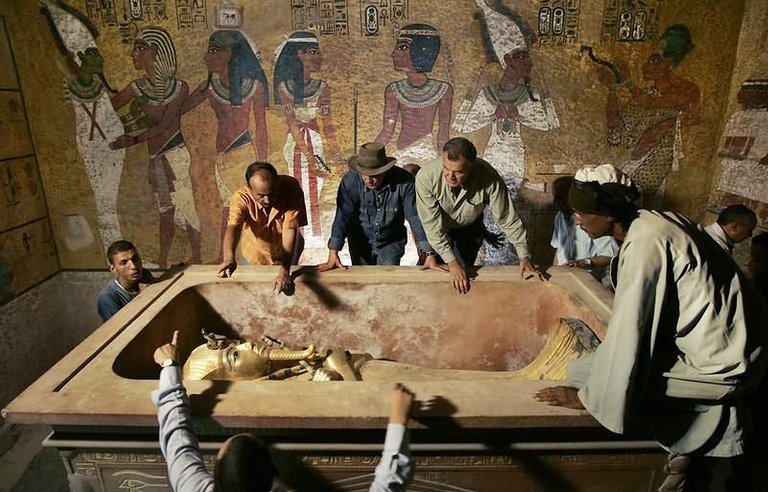
Tutankhamun ruled Egypt for approximately 10 years from around 1336-1327 BCE. In November 1922, Howard Carter and Lord Carnarvon discovered Tutankhamun's near-intact tomb in the Valley of the Kings. The king's mummified body was found surrounded by precious grave goods, in his golden coffin, after his burial chamber was officially opened on 17 February 1923 in the presence of Egyptologists and government officials.
utankhamun was originally named Tutankhaten. This name, which literally means “living image of the Aten”, reflected the fact that Tutankhaten’s parents worshipped a sun god known as “the Aten”. After a few years on the throne the young king changed his religion, abandoned the Aten, and started to worship the god Amun [who was revered as king of the gods]. This caused him to change his name to Tutankhamun, or “living image of Amun”.
Tutankhamun was not, however, the name by which his people knew him. Like all of Egypt’s kings, Tutankhamun actually had five royal names. These took the form of short sentences that outlined the focus of his reign. Officially, he was:
(1) Horus Name: Image of births
(2) Two Ladies Name: Beautiful of laws who quells the Two Lands/who makes content all the gods
(3) Golden Horus Name: Elevated of appearances for the god/his father Re
(4) Prenomen: Nebkheperure
(5) Nomen: Tutankhamun
Tutankhamun’s heart is missing
The ancient Egyptians believed that it was possible to live again after death, but thought that this could only be achieved if the body was preserved in a lifelike condition. This led them to develop the science of artificial mummification.
Essentially, mummification involved desiccating the body in natron salt, then wrapping it in many layers of bandages to preserve a lifelike shape. The body’s internal organs were removed at the start of the mummification process and preserved separately. The brain, its function then unknown, was simply thrown away – the heart, rather than the brain, was regarded as the organ of reasoning. As such, the heart would be required in the afterlife. It was therefore left in place and, if accidentally removed, immediately sewn back; though not always in its original location.
Congratulations @blackloser! You received a personal award!
You can view your badges on your Steem Board and compare to others on the Steem Ranking
Do not miss the last post from @steemitboard:
Vote for @Steemitboard as a witness to get one more award and increased upvotes!